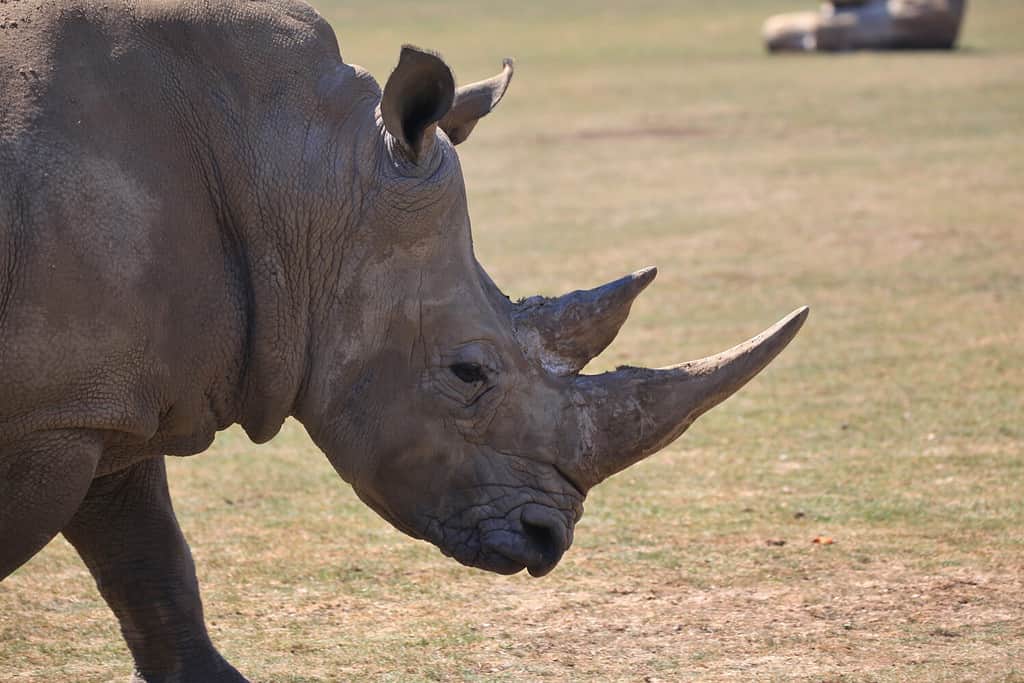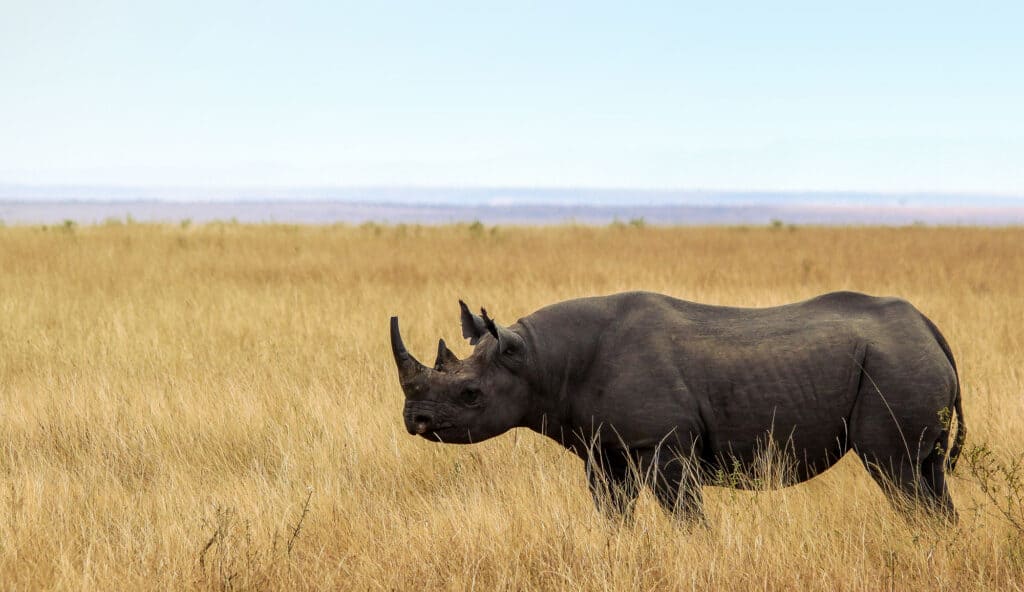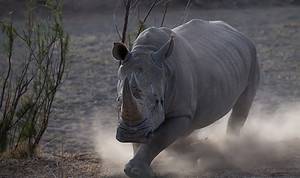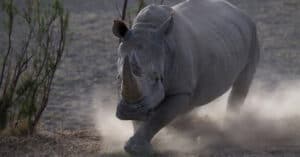There are five species of rhinos in the world. Black and white rhinos live in Africa. Javan, Sumatran, and greater one-horned rhinos all live in various parts of Asia. Black, Javan, and Sumatran rhinos are all critically endangered. In fact, Javan rhinos only live in one area in the entire world, a protected national park on the island of Java. Greater one-horned rhinos were once down to as few as 200 left in the wild but increased the population to over 3,500 due to conservation efforts. They have a Vulnerable status. The Near Threatened southern white rhino was once thought to be extinct in the wild. Northern white rhinos, on the other hand, are extinct in the wild and extremely rare even in captivity. Only two animals remain. They both live in Kenya’s Ol Pejeta Conservancy and are kept under constant guard.
Why Did Rhinos Become Endangered?

White rhinos often live in herds on protected wildlife preserves.
©Jurgens Potgieter/Shutterstock.com
Hunting played a major role in the dwindling number of these animals left in the wild during the first half of the 20th century. Almost half a million rhinos were estimated to live in the wild at the beginning of the 20th century but by the 1970s, only 70,000 remained. Once the public became aware of the threat of extinction, laws changed to prohibit the hunting and killing of rhinos.
However, that does not always deter illegal poaching and trade. Rhinos are still killed for their horns, a practice that is illegal and contributes to their endangered status. Habitat loss also plays a role. Because there are fewer areas able to support the diverse ecosystem that these animals rely on, these animals have a harder time surviving to adulthood. Many of the rhinos that remain in the wild live on wildlife preserves and protected habitats.
What Is the Main Reason Rhinos Are Killed?

Illegal poachers kill rhinos for their horns, which criminal organizations smuggle to Asia where it is valued for its use in traditional medicines or as a trophy.
©Laura Holm/Shutterstock.com
Rhinos are usually killed for their horns. While it is illegal to poach them and buy or sell their horns, the illegal trade of rhino horns still exists. The demand is greatest in Asia. Horns are ground up to use in traditional Eastern medicine or sold as a flashy gift. It’s worth noting that the illegal trade of rhino horns is not rampant across all parts of Asia. However, it still happens with devastating effects on the wild population.
How Many Rhinos Are Left in 2024?

Rhinos are most vulnerable to poachers, predators, and general illness or injury when they are young.
©iStock.com/Merupik Rupik
According to the World Wildlife Fund, approximately 27,000 rhinos remain in the wild worldwide. Compared to their staggering numbers in the early 1900s, when as many as 500,000 rhinos lived in Africa and Asia alone, it’s easy to see why the decline in the wild population is such a big deal.
Rhinos are herbivores and eat grass, fruit, shrubs, and bark in their native habitat. They are an important part of the ecosystem. As they graze and roam, rhinos spread seeds, supporting the health of the grassland. This is critical for many other species that also rely on these plants for nourishment. Although they can weigh as much as 7,500 pounds, these animals can also be a source of food for predators, including lions, hyenas, and wild dogs in Africa and tigers and leopards in Asia. Wild populations also contribute to tourism in the areas where they live. They are one of the “Big Five” and some of the most sought-after animals to see on safari.
Saving an Endangered Species

Conservation efforts help increase available habitat for rhino populations.
©iStock.com/Black Rhinoceros, Rhinoceros, Savannah, Tanzania, Animal
The Convention on International Trade in Endangered Species of Fauna and Flora (CITES) banned the international trade of rhino horn because it impacted the animals’ survival in the wild. Going back to 1975, this act made it easier to prosecute cases of illegal trade across borders. But it relies on enforcement, which is not as strong in some parts of the world. The black market uses these areas to continue its efforts. More stringent and enforced regulations can cut down on the illegal market for rhino horns. A stronger law enforcement presence in areas where these animals live also prevents illegal poaching before they are even in danger.
Habitat conservation can also help rhinos survive in the wild. Increased demand for agricultural land, more contact with humans, and changes to their food supply can be major issues for them. Expanding protected areas can help the herd stay healthier and allow for greater mixing of the population. Conservation efforts also strategically relocate parts of existing populations to establish new territories.
The photo featured at the top of this post is © Hanlie Krause/Shutterstock.com
Thank you for reading! Have some feedback for us? Contact the AZ Animals editorial team.







